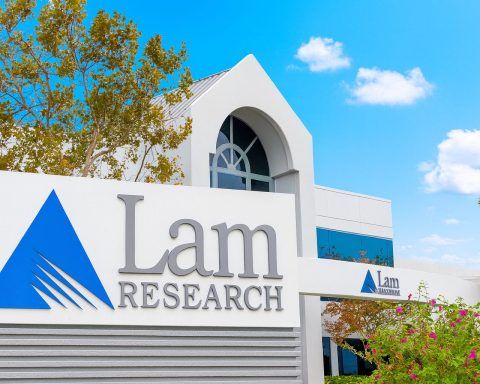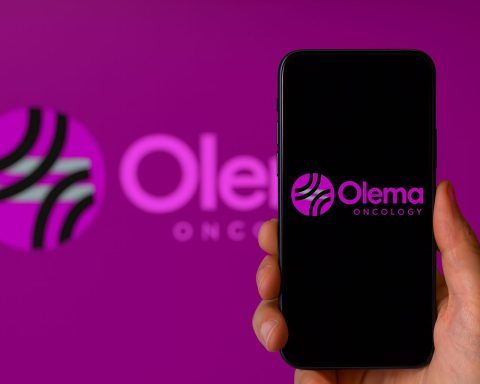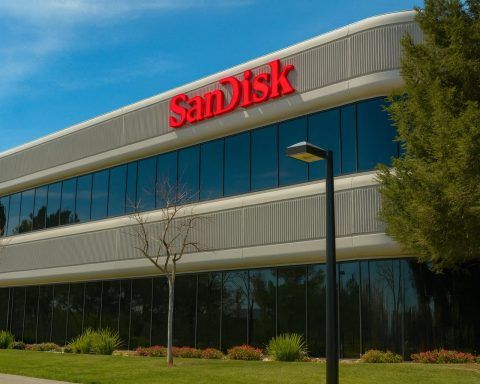- Stock Price Spike: Purple Biotech Ltd (NASDAQ: PPBT) shares nearly doubled on October 29, 2025, closing at around $1.06 (up ~82% in a day) after trading as low as $0.58 the prior session [1] [2]. The stock briefly hit an intraday high of $1.41 amid heavy volume [3], reflecting a dramatic rally of roughly +100% following new developments [4].
- Breakthrough Announcement: The company announced a manufacturing breakthrough for its tri-specific antibody IM1240, achieving commercially viable production yields. This validates the scalability of Purple’s novel CAPTN-3 platform and positions IM1240 for first-in-human trials, with an IND filing planned in 2026 [5]. The news ignited investor optimism around Purple Biotech’s cancer therapy pipeline.
- Recent Developments: Just days earlier, Purple Biotech disclosed it had fallen out of Nasdaq compliance due to its share price under $1 [6]. It has until April 2026 to cure this, potentially via a reverse split (ADS ratio change) if needed [7]. The company also set a December 15 shareholder meeting to approve equity awards for executives [8], and in September it raised $6 million in a public offering at $1.00 per share (with warrants for up to $12 million more) [9] – a dilution that had pressured the stock below the $1 level.
- Analyst & Expert Insight: Despite its penny-stock status, the sole Wall Street analyst covering PPBT maintains a bullish Buy rating with a sky-high $33–$34 target price [10] [11] – implying multi-thousand-percent upside if the pipeline succeeds. H.C. Wainwright, for instance, cited Purple’s clinical advancements and strong liquidity (cash > debt) as support for a $34 target [12] [13]. However, automated models strike a cautious tone: TipRanks’ AI-based “Spark” analyst recently rated PPBT an “Underperform,” flagging the company’s lack of revenue and ongoing losses as concerns [14]. Trading experts also urge caution amid the volatility – “I focus on momentum that’s visible right now. Speculation on future moves is outside my playbook,” noted Tim Bohen, lead trainer at StocksToTrade, emphasizing risk management for such explosive moves [15].
- Outlook: The breakthrough with IM1240 bolsters confidence that Purple’s immunotherapy platform can deliver tangible results, potentially attracting partners or investors. The company is advancing multiple cancer drug candidates (including a second tri-specific antibody, IM1305, targeting TROP2 [16], and drugs CM24 and NT219 in Phase 2 studies [17] [18]). Key catalysts ahead include the planned 2026 IND submission for IM1240, progress in ongoing trials (e.g. NT219 in head & neck cancer [19]), and the outcome of the shareholder meeting (which could signal management’s commitment and retention of talent). While Purple Biotech remains a high-risk micro-cap (even after the pop, shares trade ~92% below their 52-week high [20] and the market cap is only ~$11 million [21]), this week’s surge shows how quickly sentiment can shift. Investors will be watching whether the stock can hold above the $1 mark to regain Nasdaq compliance, and whether further clinical wins or partnerships can sustain the newfound momentum.
Stock Price Soars on Cancer Therapy Breakthrough
Purple Biotech’s stock took Wall Street by surprise on Wednesday, skyrocketing by roughly 100% in a single trading day [22]. The price surged from the mere $0.60 range on Tuesday to over $1.20 at the peak of Wednesday’s session [23]. It eventually settled to close at $1.06, up 81.8% from the prior day’s close of $0.58 [24]. This explosive move came on unusually heavy trading volume, indicating keen investor interest in the company’s latest news. Even after the jump, PPBT remains a penny stock – to put it in context, it is still down about 74% over the past year and over 90% below its 52-week high of $13.95 [25]. The rally, however, lifted shares off all-time lows (around $0.53 hit earlier this month [26]) and back above the crucial $1 threshold, at least for now.
The catalyst for this massive gain was a pre-market announcement on Oct. 29 that Purple Biotech achieved a key manufacturing milestone for its lead preclinical drug candidate. The company reported it can now produce IM1240 – a complex “tri-specific” antibody designed to attack cancer on multiple fronts – at commercially viable yield and high purity [27]. In simple terms, Purple proved it can manufacture this cutting-edge immunotherapy at scale, a critical step toward bringing it into human trials. IM1240 is the first drug from Purple’s proprietary CAPTN-3 platform, which engineers antibodies with three targeting arms (hence “tri-specific”). It simultaneously targets 5T4, a protein on tumors; CD3, a receptor activating T-cells; and NKG2A, an inhibitory receptor on immune cells [28]. This multi-pronged approach aims to unleash a coordinated immune attack on cancer cells while minimizing side effects.
Company executives hailed the breakthrough as a game-changer for their platform. “Establishing a process capable of producing tri-specific antibodies marks a major step in our development program,” said CEO Gil Efron, noting the high-efficiency manufacturing process is delivering a “differentiated T cell engager” with built-in safety features to prevent off-tumor immune activation [29]. Dr. Michael Schickler, Purple’s Head of Clinical and Regulatory Affairs, added that producing a tri-specific protein like IM1240 at high yield had been perceived as a significant challenge – one that the company is proud to have “successfully mastered” [30]. By demonstrating this capability, Purple Biotech believes its CAPTN-3 technology can reliably generate these complex antibodies, which engage both T-cells and NK cells, in a way that’s competitive for further development [31]. An Investigational New Drug application (IND) to begin human trials of IM1240 is now on track for 2026 [32].
News of this scientific and manufacturing milestone instantly galvanized the market. Small biotech stocks are notoriously sensitive to R&D updates, and Purple Biotech’s achievement suggested that its novel immunotherapy might be closer to reality than skeptics assumed. Traders piled in, betting that the company’s ultra-low valuation did not reflect the potential of its pipeline. Within hours, PPBT’s market capitalization jumped from roughly $6 million to over $11 million [33] – still tiny by industry standards, but a testament to how quickly sentiment can flip when a micro-cap biotech delivers good news.
Recent Company News: Compliance Challenges and Cash Infusion
The eye-popping rally follows a period of significant challenges for Purple Biotech. Earlier in October, the company received a warning from Nasdaq that it was out of compliance with the exchange’s $1.00 minimum bid price requirement [34]. By October 16, Purple’s stock had traded below $1 for 30 consecutive business days, triggering a formal notification. The company was given 180 calendar days (until April 14, 2026) to regain compliance by bringing its share price back above $1 for at least ten consecutive days [35]. Failure to do so could eventually lead to delisting from the Nasdaq Capital Market. Purple Biotech assured investors that this letter has no immediate effect on its listing [36] and stated it will consider all available options to cure the deficiency – including potentially adjusting the ratio of its American Depositary Shares (ADSs) to underlying ordinary shares [37]. Such an adjustment effectively works like a reverse stock split to artificially boost the per-share price. Ironically, this week’s breakout above $1 (if it can be sustained) may itself solve the problem, as maintaining a $1+ share price for 10 days would restore compliance [38].
In addition to the listing concerns, Purple Biotech had been grappling with stock dilution and cash needs – common issues for clinical-stage biotechs. In early September 2025, the company raised fresh capital through a public offering. It sold ~6 million new shares (ADSs) at $1.00 each, securing $6 million upfront, and issued warrants that could bring in another $12 million if exercised [39]. This financing, while bolstering Purple’s balance sheet, nearly doubled the share count and exerted downward pressure on the stock price. On the news of the deeply discounted offering, PPBT shares plunged about 45% [40] [41], and continued sliding under $1 in the weeks thereafter. The offering was necessary to fund ongoing R&D: proceeds are earmarked for advancing Purple’s oncology pipeline – including the CAPTN-3 tri-specific antibodies (like IM1240) and other programs – as well as for general corporate purposes [42].
Despite the dilution, the infusion extended Purple Biotech’s cash runway. As of mid-2025, the company had only $5.6 million in cash on hand, which management said was sufficient to operate into Q3 2026 [43]. The additional $6 million from September’s raise likely pushes the runway even further, perhaps into 2027, giving the company time to reach key milestones. Notably, Purple carries no debt (long-term debt is $0) and has kept its burn rate relatively low after scaling down expenses [44]. This lean balance sheet means shareholder dilution is the main funding tool, a double-edged sword that keeps the company solvent but has punished the stock price. The recent spike, however, offers a bit of a reset.
On the corporate front, Purple Biotech also announced an upcoming Extraordinary General Meeting (EGM) of shareholders for December 15, 2025 [45]. The main agenda is to approve equity-based compensation for the CEO and board members. While routine in many companies, such proposals can draw attention in a micro-cap setting – some investors will watch to see if insiders are rewarded amid share price struggles. Approval of stock awards could signal confidence that leadership expects a turnaround (aligning their incentives with long-term stock performance), but it also slightly increases the share count through potential future grants. How shareholders vote may offer a reading on investor sentiment toward management’s strategy. Overall, these housekeeping matters set the stage for Purple Biotech’s recent hero moment – the IM1240 breakthrough – which shifted the narrative more positively.
Analyst Commentary and Market Reactions
Purple Biotech’s rollercoaster journey has caught the eye of at least a few analysts and market commentators. Coverage is sparse given the company’s tiny size, but the views that do exist span from ultra-bullish to cautious. On the bullish end, H.C. Wainwright analyst Emily Bodnar earlier this year reiterated a “Buy” rating on PPBT and even nudged her 12-month price target up to $34 (from $33) [46]. At the time (May 2025), the stock traded near $2.40, so Bodnar’s target already implied huge upside. Now, with shares around $1, that target looks even more extreme – roughly a 3,000% to 5,000% gain from current levels. According to Zacks Investment Research, only one analyst officially covers Purple Biotech and has a short-term target of $34, which represents a staggering 5762% above the recent price before the surge [47]. Such outsized projections reflect optimism that Purple’s cancer therapies could eventually deliver significant value (and perhaps a higher stock price via mergers or partnerships), but they also underscore the speculative nature of these forecasts.
H.C. Wainwright’s optimism was rooted in Purple’s scientific progress and finances. The firm noted that Purple had made notable advancements in its clinical pipeline, including presenting new biomarker data from trials at a major cancer research conference (AACR) in April [48]. This refers to data from Purple’s Phase 2 study of CM24 (an antibody targeting CEACAM1) in pancreatic cancer patients, where certain biomarker-defined subgroups saw statistically significant survival benefits [49] [50]. Those results, unveiled earlier in 2025, validated a biomarker-driven approach that will guide a planned Phase 2b trial for CM24. Wainwright’s analyst also pointed out Purple’s strong liquidity for a company its size – with a market cap under $10 million, Purple had a current ratio near 2.7 and more cash than liabilities, indicating it can support its ongoing studies for now [51]. This relatively healthy balance sheet (for a micro-cap biotech) was highlighted as a positive, since many peers face debt or urgent cash crunches. In short, the bulls believe Purple Biotech’s deep pipeline of first-in-class cancer drugs and its prudent financial management could eventually yield major returns if even one program hits paydirt.
On the other side, skeptics and quantitative models urge careful consideration of risks. TipRanks, which aggregates analyst ratings and uses an AI-driven scoring system, currently labels PPBT as “Underperform” [52]. The rationale: Purple Biotech has no revenue (its drug candidates are still in trials), incurs losses each quarter, and its technical indicators had been mostly bearish prior to this week. The lack of profitability or any approved product means traditional valuation metrics look weak – by standard measures, the stock appeared overvalued even at pennies, because the company continuously spends cash with uncertain payoff. TipRanks’ AI noted “significant financial challenges and unattractive valuation metrics,” assigning Purple a low stock score compared to more stable biotech firms [53]. This dismal view was reinforced by the fact that Purple doesn’t pay dividends and won’t generate sales unless its drugs succeed in trials and commercialization. In other words, it’s a classic high-risk/high-reward story.
Market experts also remind traders about the volatility of micro-cap biotech stocks. Tim Bohen, a veteran trading mentor at StocksToTrade, commented on the situation without naming Purple directly: “I focus on momentum that’s visible right now. Speculation on future moves is outside my playbook.” [54] In context, Bohen’s advice suggests that while momentum is clearly on Purple Biotech’s side this week, chasing a stock after a 100% jump requires caution. The quote encourages investors to react to what’s tangible (e.g. real news and current price action) rather than purely speculative future outcomes. For Purple, the tangible news – a manufacturing breakthrough – is a concrete positive development. Yet the future outcome (will IM1240 succeed in clinical trials? will Purple become profitable?) remains uncertain. The stock’s surge may be tempting, but the road ahead is still long, so experts emphasize risk management. Biotech analysts often recommend that investors size positions carefully in such speculative names, or focus on a basket of promising biotechs to spread risk, given the binary nature of drug trial results.
Future Outlook: Can Purple Biotech Sustain the Momentum?
Looking forward, Purple Biotech’s trajectory will depend on its ability to turn scientific promise into clinical and commercial success. The recent IM1240 manufacturing milestone is a critical step forward – it not only de-risks the production process for that antibody, but also validates the broader CAPTN-3 platform. This could make it easier for Purple to collaborate with larger pharmaceutical companies or attract licensing deals, since it demonstrated it can reliably produce tri-specific antibodies (a cutting-edge modality) at scale [55]. The company has already expanded this platform with a second tri-specific antibody, IM1305, targeting a different tumor antigen (TROP2) common in many cancers [56]. That candidate was announced in late August and is in preclinical development. Success with IM1240’s manufacturing bodes well for IM1305 and any future tri-specific antibodies in Purple’s pipeline – essentially showing that the technology is scalable and not just a lab experiment.
The next big catalyst on the horizon is expected in 2026, when Purple Biotech plans to file an IND application for IM1240 and commence a Phase 1 clinical trial [57]. In the interim, the company will be performing IND-enabling studies (e.g. animal toxicology tests) to ensure the drug is ready for human testing [58]. If all goes well, by 2026 IM1240 could enter its first-in-human trial targeting patients with advanced solid tumors expressing the 5T4 antigen. Investors often see the start of clinical trials as inflection points – positive early data (even from a small Phase 1 safety study) can further re-rate a biotech stock, while setbacks can hurt. Given IM1240’s novel mechanism (engaging both T-cells and NK cells with a tumor-specific trigger), there will be considerable interest in any signals of immune activity or tumor response once it’s in the clinic.
Aside from IM1240, Purple Biotech has other ongoing projects that could generate news. Its antibody CM24 (partnered with Bristol Myers Squibb in earlier stages) completed a Phase 2 trial in pancreatic cancer with encouraging subgroup results [59]. The company is now seeking partners or funding to launch a Phase 2b trial for CM24, using the biomarkers identified to select patients most likely to benefit [60] [61]. Any deal or progression on this front would be a positive development. Meanwhile, Purple’s small-molecule drug NT219 – which inhibits cancer cell survival pathways (IRS1/2 and STAT3) – is already in a Phase 2 trial for head and neck cancer in combination with standard therapies [62]. That trial, run with researchers at University of Colorado, dosed its first patients in 2025. Updates on enrollment or preliminary results from NT219’s study could come in 2026 as well. Results from these programs will help determine if Purple Biotech can move from an R&D-stage company toward having a marketable treatment.
Financially, Purple appears to have a cushion for the near-term, but it will likely require additional funds before any drug reaches approval. The current cash (plus potential warrant exercises) should fund operations through key milestones next year. If the stock price remains above $1 and especially if it rises on further good news, Purple could use its higher valuation to raise capital again under more favorable terms (at a higher share price, causing less dilution). Conversely, if the excitement fades and shares sink back below $1, the company might have to consider the ADS ratio change (reverse split) to avoid Nasdaq delisting in 2026 [63]. Such an action could temporarily boost the price but doesn’t change fundamentals – it’s essentially a cosmetic fix to the listing issue. Thus, sustaining genuine investor interest is important.
In summary, Purple Biotech now stands at a potential turning point. The stock’s jump on October 29, 2025 put the company back on the map after a prolonged slump. It demonstrated that tangible progress in its pipeline – in this case, proving its ability to manufacture a complex cancer-fighting antibody – can swiftly translate into shareholder value. Moving ahead, investors will look for Purple to maintain this momentum by hitting promised milestones: initiating the IM1240 trial, advancing other pipeline candidates, and possibly securing partnerships or non-dilutive funding (such as grants or collaborations) to further validate its technology. The biotech sector overall has been volatile, but also rewarding for breakthrough innovations. If Purple’s multi-armed antibody approach proves effective in patients, the current stock price could indeed appear insignificant in hindsight. For now, the company has bought itself goodwill and attention – and a reprieve from Nasdaq compliance worries – but it will need to deliver more concrete wins to justify the optimism. All eyes are on Purple Biotech’s next steps, as this tiny Israeli oncology firm strives to turn its lab successes into real-world cancer treatments and, by extension, long-term shareholder value.
Sources: Purple Biotech press releases [64] [65]; GlobeNewswire and Yahoo Finance [66] [67]; TipRanks News [68]; Investing.com [69]; StocksToTrade [70] [71]; Finviz stock data [72] [73].
References
1. finviz.com, 2. finviz.com, 3. www.google.com, 4. m.investing.com, 5. www.globenewswire.com, 6. www.globenewswire.com, 7. www.globenewswire.com, 8. www.tipranks.com, 9. www.ainvest.com, 10. www.zacks.com, 11. www.tipranks.com, 12. www.investing.com, 13. www.investing.com, 14. www.tipranks.com, 15. stockstotrade.com, 16. finviz.com, 17. www.investing.com, 18. www.investing.com, 19. www.globenewswire.com, 20. finviz.com, 21. www.google.com, 22. m.investing.com, 23. stockstotrade.com, 24. finviz.com, 25. finviz.com, 26. www.google.com, 27. www.globenewswire.com, 28. www.globenewswire.com, 29. www.globenewswire.com, 30. www.globenewswire.com, 31. www.globenewswire.com, 32. www.globenewswire.com, 33. www.google.com, 34. www.globenewswire.com, 35. www.globenewswire.com, 36. www.globenewswire.com, 37. www.globenewswire.com, 38. www.globenewswire.com, 39. www.ainvest.com, 40. finviz.com, 41. finviz.com, 42. www.ainvest.com, 43. www.globenewswire.com, 44. www.investing.com, 45. www.tipranks.com, 46. www.investing.com, 47. www.zacks.com, 48. www.investing.com, 49. www.globenewswire.com, 50. www.globenewswire.com, 51. www.investing.com, 52. www.tipranks.com, 53. www.tipranks.com, 54. stockstotrade.com, 55. www.globenewswire.com, 56. finviz.com, 57. www.globenewswire.com, 58. www.globenewswire.com, 59. www.globenewswire.com, 60. www.globenewswire.com, 61. www.globenewswire.com, 62. www.globenewswire.com, 63. www.globenewswire.com, 64. www.globenewswire.com, 65. www.globenewswire.com, 66. www.ainvest.com, 67. www.investing.com, 68. www.tipranks.com, 69. m.investing.com, 70. stockstotrade.com, 71. stockstotrade.com, 72. finviz.com, 73. finviz.com







